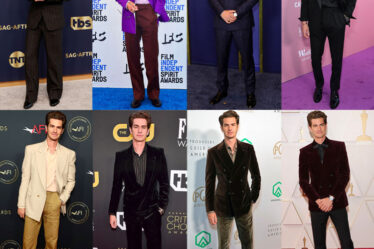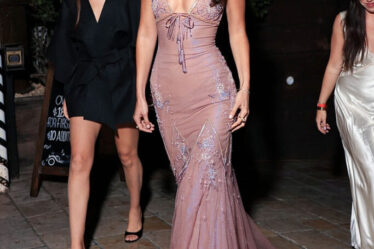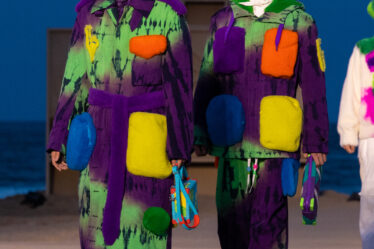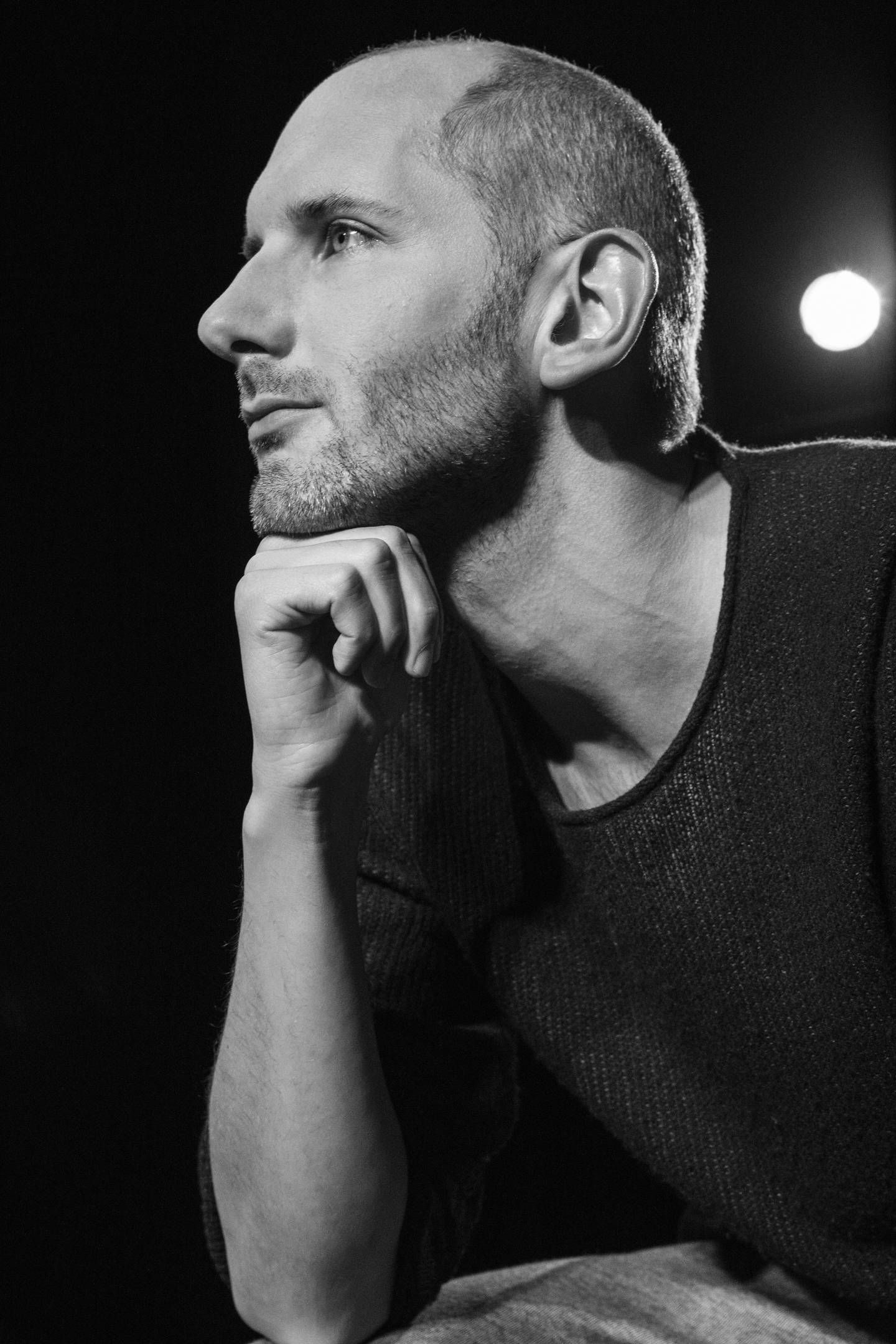
If a shopper were to go to a perfume counter and smell Tom Ford Ébène Fumé and Clinique Happy, it would be difficult to see commonalities between the two; the former is a smoky, woodsy scent that retails for nearly $300, the other a citrus and floral blend that costs a third of the price. But the creator of both scents is the same person: the perfumer Rodrigo Flores-Roux. But you won’t find his name anywhere on the bottle.
“Perfumers in many cases were ghostwriters,” said Flores-Roux, vice president of perfumery at Givaudan. Beyond Ébène Fumé and Happy, he is the creator of scents for Mexican niche brand Xinú and designer Thom Browne.
It is not unusual for perfumers, also known as noses, to develop such a broad range of fragrances. With the creation of perfume formulas outsourced to just a handful of fragrance manufacturers like Givaudan and DSM-Firmenich, many of the top selling fragrances across the market are created by a recurring set of figures — even while those names or faces are rarely known beyond an inner consortium of fragrance lovers — that is unless said noses choose to establish their own brands.
But with perfume connoisseurship only becoming more mainstream, thanks to communities like FragranceTok, perfumers are becoming less and less anonymous. “If you go to the ceremony for The Fragrance Foundation Awards, when they mention a perfume up on the screen, the perfumer is mentioned basically every single time, which was not the case 10 years ago,” added Flores-Roux.
Brands like Editions de Parfums Frederic Malle and Essential Parfums have also made it a point to publish the perfumers’ names on their works, speaking to fragrance consumers who value transparency more than ever. But most labels keep the perfumer absent from any marketing, with some like Tom Ford not publicising the names of their perfumers at all. For some noses, that’s not necessarily a bad thing as they prefer to focus on creation rather than publicity.
“It’s always fun to be a star, but never forget that you have to continue to be creative,” said Anne Flipo, master perfumer at International Flavors & Fragrances, Inc.
Even while social media and online fragrance forums have made fragrance knowledge more accessible, perfume remains a relatively exclusive industry. The pipeline to a career as a nose is almost entirely the domain of French schools like Versailles’ Institut Supérieur International du Parfum, de la Cosmétique et de l’aromatique Alimentaire and the Grasse Institute of Perfumery, and the top level of the field is still largely dominated by men — though that is slowly changing.
Here, The Business of Beauty profiles the top perfumers driving innovation across scents from designer to niche, luxury to mass.
Quentin Bisch, perfumer at Givaudan
Location: Paris, France
Quentin Bisch nearly gave up on a career in perfumery due to one subject: chemistry. Born in Strasbourg, he fell in love with perfume while growing up around powerful scents like Yves Saint Laurent Opium. Bisch was told a background in chemistry was a requirement for admission to perfume schools, which proved a significant roadblock. “I’m not a chemist at all. I’m very bad at chemistry,” he said. After turning to theatre design instead, he made one last attempt to pursue perfumery without a science background and was accepted into Givaudan’s perfumery school in 2008. And doing things his own way has become a signature.
“If you look at all my successes, the best ones are examples in which I was free,” said Bisch. “Nobody came to say, ‘Put that [in], just get rid of that. [There was] no interruption.’”
Such was the case with Fleur Narcotique, the sparkling floral scent he offered to Ex Nihilo for the brand’s debut in 2014. “I told the Ex Nihilo team, ‘I’m giving you something that’s gonna be a hit,’” he said of the scent that later became the brand’s best seller.
Subsequent designer creations like Angel Muse for Mugler helped establish Bisch’s reputation for addictive feminine fragrances, but he cites Parfums de Marly’s Delina as a turning point in his career. The brand originally passed on the scent in 2016. “At the beginning, they really loved it, but they didn’t keep it,” he said. By decreasing a bit of the rhubarb, it was a game-changer and Delina was born.
Delina has since become Parfums de Marly’s top seller, helping catapult the brand to roughly $300 million in annual sales; in 2023, the brand was acquired by private equity firm Advent International. But despite a prescient vision for hits like Delina, Bisch describes the work of a perfumer as one of constant learning. “It teaches you a lot about humility,” he said. “You need to not be too sure about yourself, because you know nothing.”
Notable creations: Ex Nihilo Fleur Narcotique (2014); Mugler Angel Muse (2016); Carolina Herrera Good Girl (2016, created with Louise Turner); Parfums de Marly Delina (2017).
Frank Voelkl, principal perfumer at DSM-Firmenich
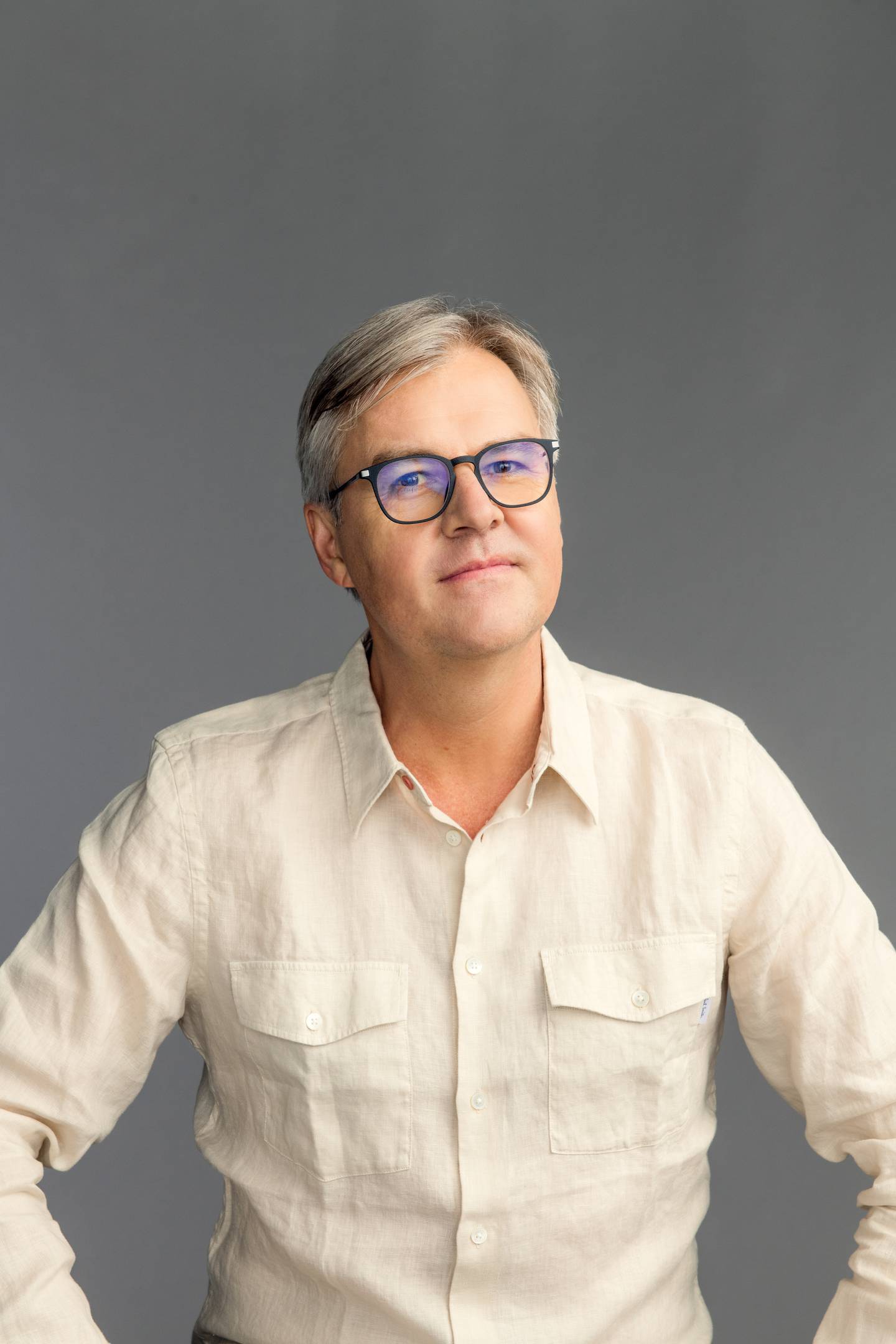
Location: New York, New York
German perfumer Frank Voelkl has created fragrances for names as disparate as Ariana Grande to Oscar de La Renta, but his most well-known creation proved that an innovative scent can supersede any brand: Le Labo Santal 33.
“It’s somewhere between a blessing and a curse,” Voelkl said of the bombastic sandalwood perfume that former Estée Lauder executive group president John Demsey once called “the icon fragrance of an entire generation.”
“There was no intention for it to become a global cult fragrance. Every brand of course always hopes and wishes for that, but you can’t plan for that.”
Voelkl’s career as a perfumer was similarly incidental. Though sensitive to smells as a child, he only discovered perfume as an industry when his family moved to Paris in his teenage years. “Perfume was completely in the shadows. And in my ignorance, I was thinking that the Calvin Kleins are creating their own fragrances,” he said.
A friend of his parents told him about ISIPCA, opening the door for his career as a perfumer. Voelkl is no one-hit wonder — Glossier You, which he created with Dora Baghriche, not only translated the iconic beauty brand’s “skin first” ethos into a fragrance but set a trend for transparent skin scents.
Despite his hero creations, Voelkl said even leading perfumers like himself must still battle to win projects from top brands. He believes a key part of the job is not only responding to wins, but also to losses.
“Statistically, I have more disappointments than successes. It’s just the way it works,” he said. “You need to be emotionally invested to create, but you also need to be removed enough to not be completely destroyed when you lose the project.”
Notable creations: Sarah Jesscia Parker Covet (2007); Le Labo Santal 33 (2011); Glossier You (2017, created with Dora Baghriche); Kilian Roses on Ice (2020).
Anne Flipo, master perfumer at IFF
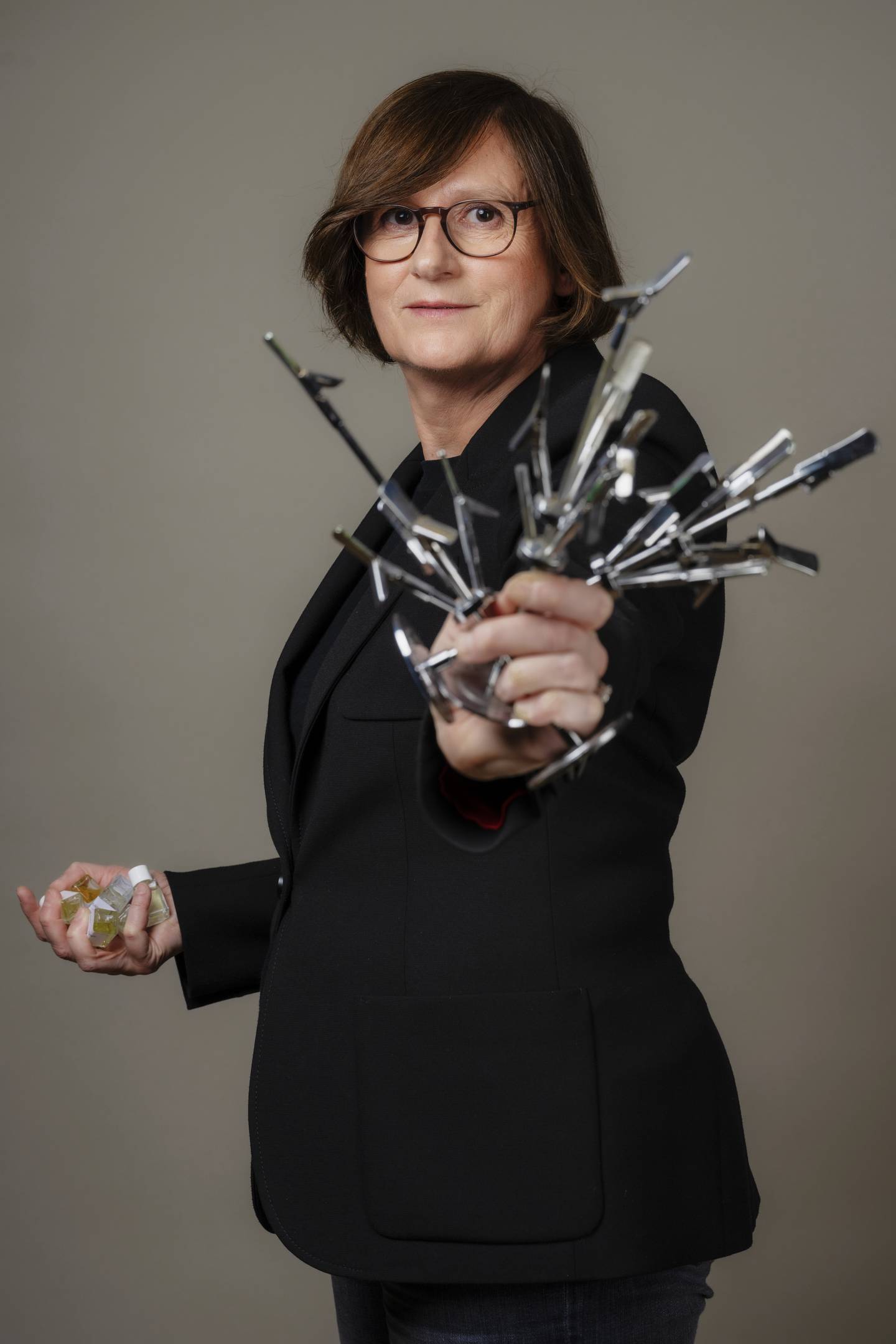
Location: Paris, France
Part of the role of a master perfumer is to pass their knowledge onto the next generation. Anne Flipo, whom IFF named master perfumer in 2019, advises aspiring creators to see themselves not just as artists but athletes: “You have to have very good health,” Flipo said. “If you are always sick it’s complicated, because you will have problems with smell.”
And stamina is equally crucial, particularly when competing for briefs from major brands — as Flipo has done many times over, having worked on Yves Saint Laurent’s L’Homme and Libre, Paco Rabanne’s Lady Million and Lancôme La Vie Est Belle. “You have to understand at the beginning when you are working on a project that there are a lot of competitors,” she said. “To have your idea get to the bottle, it’s very difficult. It’s a very long way.” Flipo recalls that YSL’s Libre spent seven years in development before hitting the market in 2019.
Flipo was raised in northern France, where her father was the head of a sugar factory, exposing her early on to addictive aromas and flavours. When she began her studies at Versailles’ ICIP (now ISIPCA) in 1981, there were comparatively few women perfumers. “Sophia Grojsman I think was the first world-renowned woman that [I] wanted to follow, because she was the creator of [Lancôme] Trésor, [Calvin Klein] Eternity.”
Despite the lack of female representation, Flipo said, “I never have to fight to be recognised.”
In 2023, Flipo’s 40-year career earned her the Fragrance Foundation’s Lifetime Achievement Award. Still, she has no signs of slowing down, and is still looking to innovations like biotechnology and artificial intelligence for change in her industry. “I think in the future we will see a lot of changes in our palette,” she said.
Notable creations: Paco Rabanne Lady Million (2010, created with Beatrice Piquet, Dominique Ropion and Bruno Jovanovic); Jo Malone Basil & Neroli (2016); YSL’s Libre (2019, created with Carlos Benaïm), Frederic Malle Synthetic Nature (2021).
Jérôme Epinette, vice president of fine fragrance at Robertet
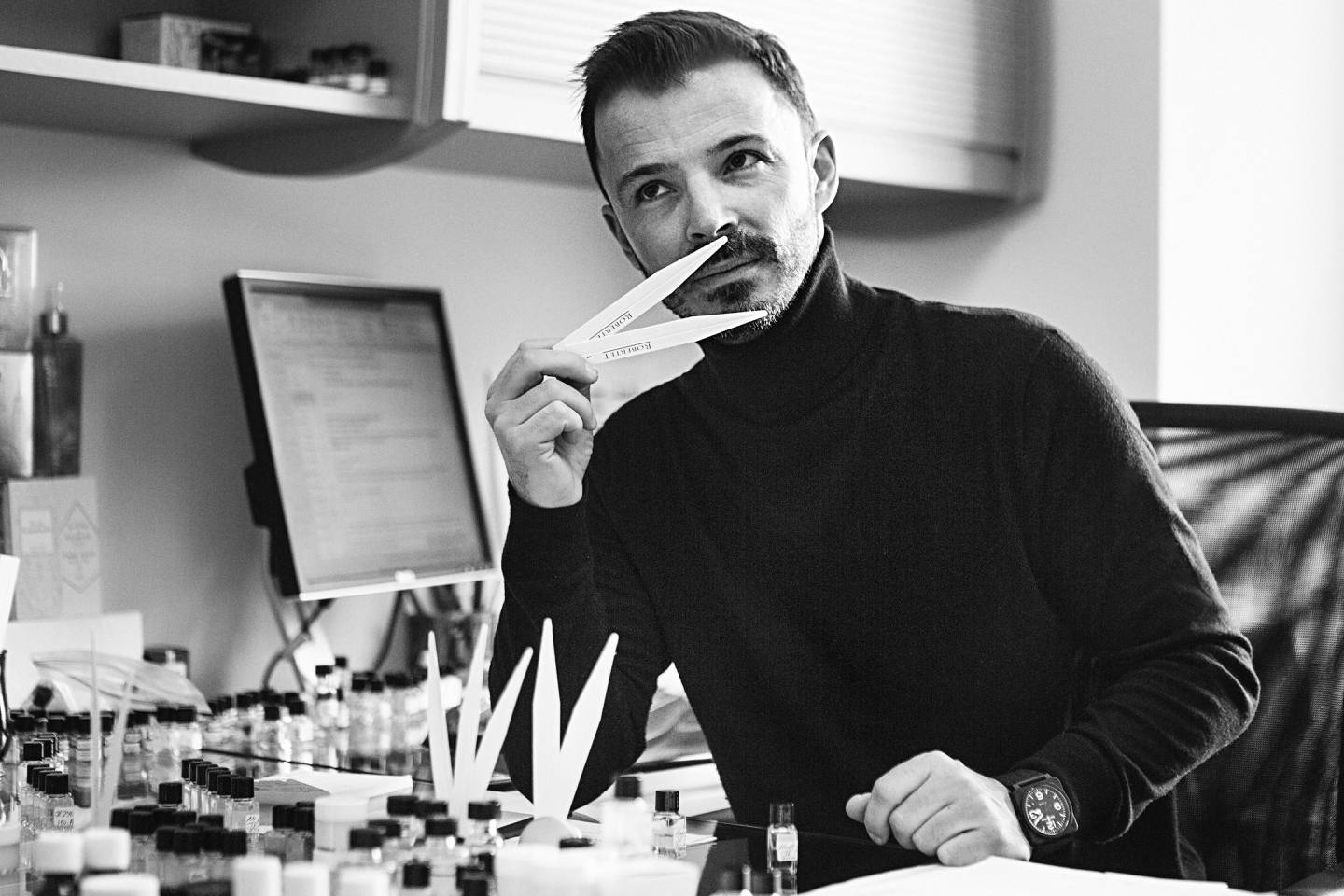
Location: New York, New York
If you’ve paid attention to perfume launches in the last year, it would be hard not to notice the work of Jérôme Epinette. From Victoria Beckham’s fine fragrance line to Harry Styles’ Pleasing perfume debut, Epinette is the nose behind them all.
“My mom gave me my passion,” Epinette said of his childhood in Burgundy, where his mother owned a perfume store. Epinette studied at the Grasse Institute of Perfumery before moving to Paris and eventually New York to open Robertet’s creative center in 2006. But his early exposure to fragrance remains influential. “[My mother] was interacting with clients and trying to sell fragrances and give them storytelling,” he said. “That part was interesting to me, just trying to understand the consumer need.”
And that eye for consumer desire was crucial in one of his most well-known works: Byredo Gypsy Water. Epinette created the scent for the brand’s debut perfume collection in 2008 with founder Ben Gorham, along with many subsequent hits like Bal d’Afrique. “Niche for me was a way to be creative and offer newness to the consumer,” Epinette said. “I think people started to see different things, and start thinking, ‘Oh yeah, I can wear something nice but that no one else has.’”
Byredo’s success has birthed many descendents. But Epinette cites his early work creating the Cherry Blossom and Verbena scents for body care brand L’Occitane in the early 2000s as the turning point in his career. And he still works in body care, having created the gourmand scent in Sol de Janeiro’s viral hit Bum Bum Cream; that success led Sol de Janeiro to be acquired by none other than Groupe L’Occitane in 2021 in a $450 million deal.
Though his clients are varied, Epinette said his formulation technique remains the same “It’s starting and communicating with the owner of the brand, trying to understand [their] vision,” he said. “My only advice to celebrities, you have your name, this is great, but unfortunately, you have to be behind your brand.”
Notable creations: Byredo Bal d’Afrique (2009); Vilhelm Parfumerie Poets of Berlin (2018); Ariana Grande Thank U, Next (2019); Sol de Janeiro Sol Cheirosa 62 (2020).
Dominique Ropion, master perfumer at IFF
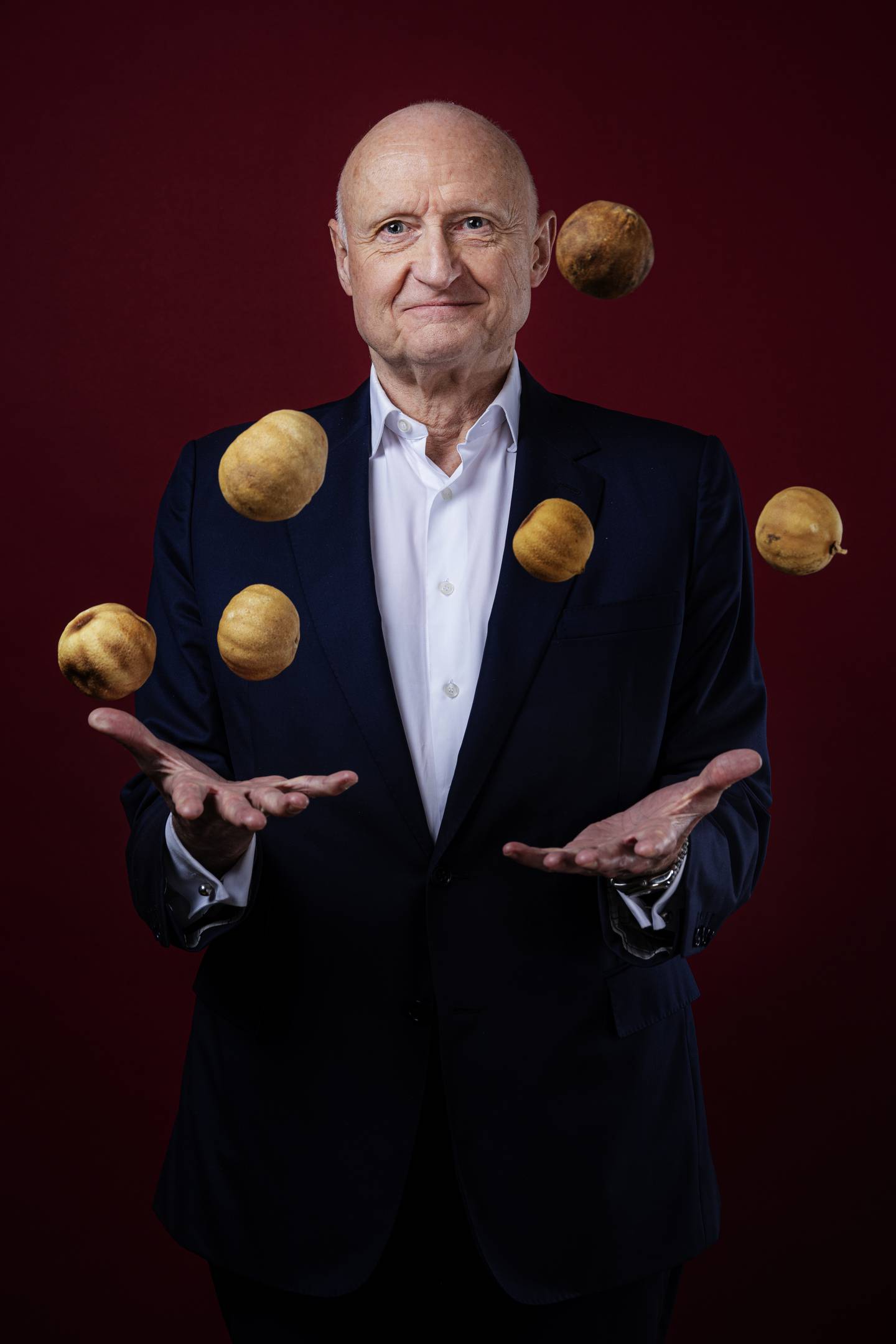
Location: Paris, France
Even after more than 40 years working in fragrance, Dominique Ropion finds Mother Nature to be his greatest teacher. “I still do a lot of analysis of the oils of flowers, of extractions from jasmine, tuberose, narcissus,” Ropion said. “All of them have this very complex formula from nature.”
Born in Paris, Ropion started his studies in physics and engineering and only began a career in perfumery when a spot opened up at Grasse’s Roure Bertrand Dupont in 1978 (now Givaudan Perfumery School). While he has worked across genres, his most well-known works celebrate classic, intoxicating florals, like jasmine in Mugler Alien and rose in Frederic Malle Portrait of a Lady (the latter contains a concentration of rose oil equally to roughly 300 roses per 50 milliliter bottle).
In contrast to the financial and creative freedom of niche labels like Frederic Malle, designer scents typically come with additional restrictions, said the perfumer — namely lower price points and rigorous consumer testing. But Ropion finds the criteria for success is the same across the market.
“All of these perfumes that we are talking about, they have a very strong signature … [Lancôme] La Vie Est Belle, [but] it’s the people, consumers that make it a success,” he said.
Winner of the Prix François Coty in 2008 and the 2019 Fragrance Foundation Awards Lifetime Achievement Award, Ropion continues to work with both major brands and rising labels like A Lab on Fire and BDK Parfums. But as far as what makes a perfume ready to go to market, for Ropion the answer is fairly simple: “The deadline.”
Notable creations: Viktor & Rolf Flowerbomb (2005, created with Olivier Polge, Carlos Benaim and Domitille Michalon Bertier); Frederic Malle Portrait of a Lady (2010); Lancôme La Vie est Belle (2012, created with Anne Flipo and Olivier Polge); BDK Vanille Leather (2023).
Nathalie Lorson, master perfumer at DSM-Firmenich
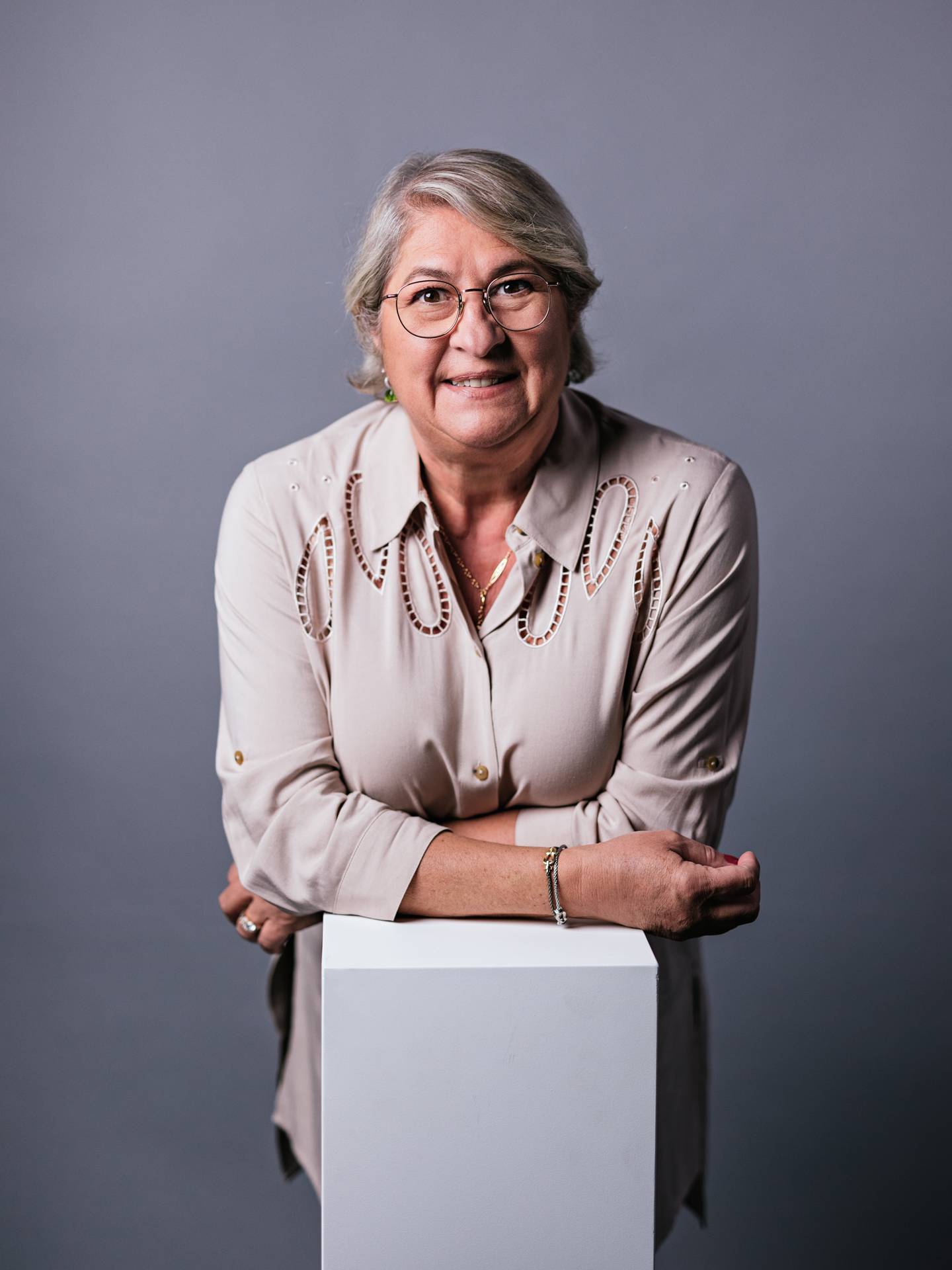
Location: Paris, France
For Nathalie Lorson, fragrance is a multi-generational family affair — her father worked as a chemist for a perfume company and her son currently works as a perfumer in body care. But outside of her family and those in the industry, her occupation largely remained a mystery: “When people asked me what are you doing as a job, I’d say ‘I’m a perfumer,’ and people thought I worked in a perfume shop,” she said.
Raised in Grasse, Lorson began her studies at Grasse’s Roure Bertrand Dupont in 1980. She spent seven years creating soaps and detergent before moving to fine fragrance. “In functional [fragrance], you do not have as much money … So it really tells you how to play with ingredients.”
Many of Lorson’s fine fragrances rely on clever uses of familiar materials — like showcasing vetiver as a deep, woody note rather than a fresh cologne in the cult favorite Lalique Encre Noire, or the overdose of ambroxan in Le Labo’s abstract Another 13 — a crucial differentiator in a crowded market. “For the people to come back to buy your perfume you have to bring something different from the others,” she said.
Lorson’s most impactful creation is perhaps Yves Saint Laurent’s Black Opium, a spin off of the hero scent Opium. “Opium for me is really about addiction. So I was thinking, ‘What can be a new addiction?’” she said. The answer was a central coffee note, which has proven to be as addictive to fragrance buyers. According to Launchmetrics, Black Opium generated $23.1 million in Market Impact Value over the course of 2023, with the scent capturing 37 percent of the total MIV garnered by the entire YSL Beauty brand during September 2023.
Lorson has seen connoisseurs take more interest in perfumers like herself, but she finds freedom remaining behind the scenes rather than staking her own brand. “My interest is really to create perfume, playing with ingredients, looking for different things. And when you have your own brand, you lose your time in other things.”
Notable creations: Lalique Encre Noire (2006); Le Labo Another 13 (2010); Yves Saint Laurent Black Opium (2014, created with Marie Salamagne, Olivier Cresp and Honorine Blanc); Essential Parfums Fig Infusion (2022).
Rodrigo Flores-Roux, vice president of perfumery at Givaudan
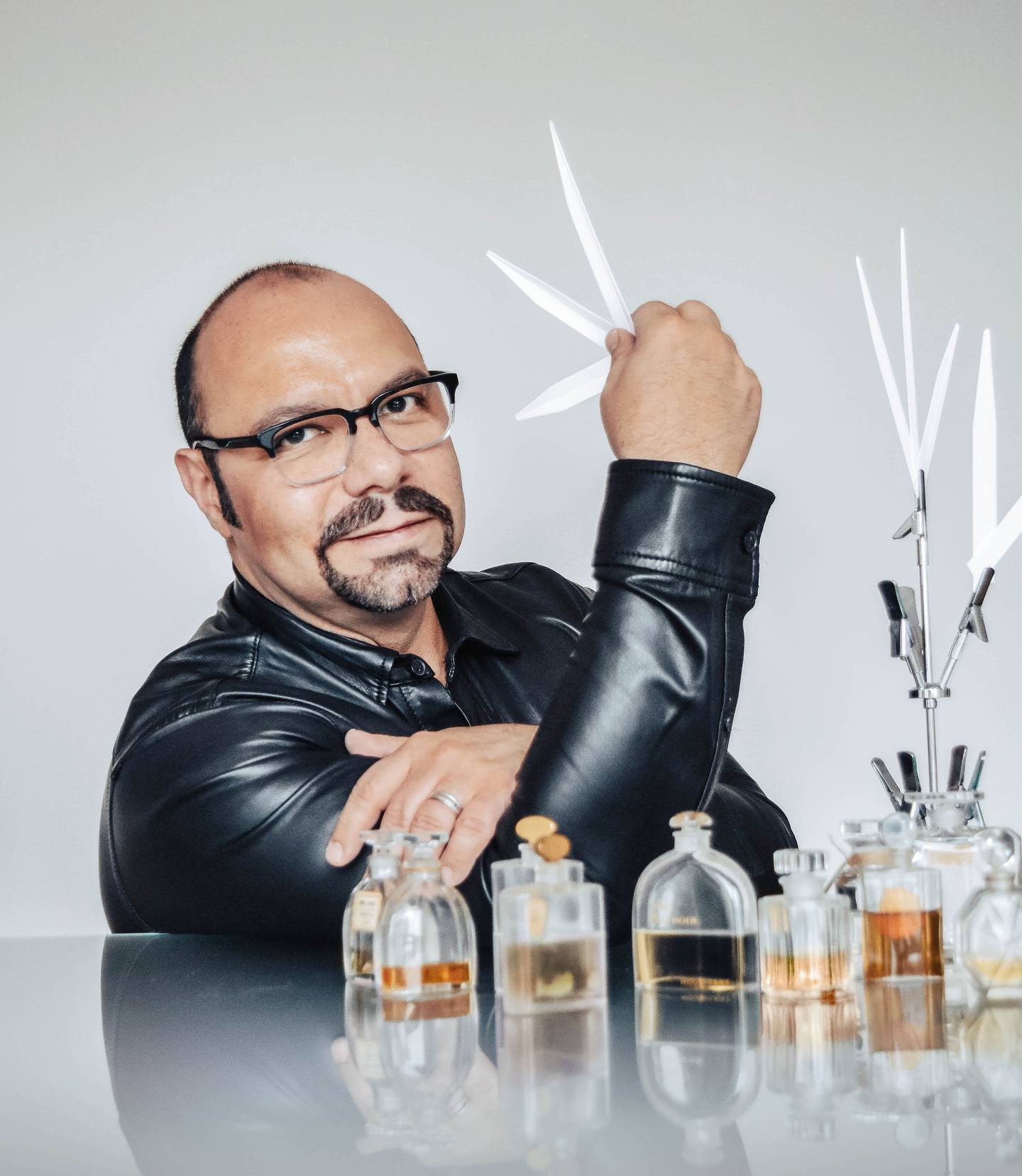
Location: New York, New York
A self-proclaimed perfume geek who hunts for vintage perfume bottles on eBay, Rodrigo Flores-Roux attributes his love for fragrance to his physicist father and biologist mother. His perfume obsession came from visiting department stores in his hometown of Mexico City and listening to his aunts discuss classic scents from Guerlain and Chanel. “Everybody knew what Shalimar was in middle class Mexico, so it was a vocabulary that I was very familiar with,” he said.
Flores-Roux sought out perfume studies at ISIPCA in Versailles before ultimately landing in New York to work with Givaudan, but his roots remain a crucial thread to his creations. “I always put Mexico in everything I do,” he said. “We are a very small group of Latin American perfumers working internationally on big projects, so that’s important.”
But getting a perfume to market requires more than just his own vision. Creating a cohesive story with a brand is crucial — whether that’s the paradoxical task of translating famously “fragrance free” skincare brand Clinique into a perfume, or distilling the exacting vision of Thom Browne into a fragrance line. “Perfume takes a village. It’s not only the perfumer fiddling around with jasmine, rose and bergamot that makes the story happen,” he said.
As a devotee to perfume history, Flores-Roux worked with Houbigant to recreate the house’s seminal Fougère Royale; first released in 1882, the scent is considered to be the first “modern perfume” for its use of coumarin, a synthetic aroma chemical. It’s fitting since Flores-Roux believes perfume is a reflection of the present as much as the past. “The fact that a little bit of the gender boundaries are blurred, I think perfume did it first,” he said. “Perfume is communication. It’s language.”
Notable creations: Clinique Happy (1998); Tom Ford Neroli Portofino (2007); Houbigant Fougère Royale (2010); Thom Browne Vetyver Absolute (2019).

